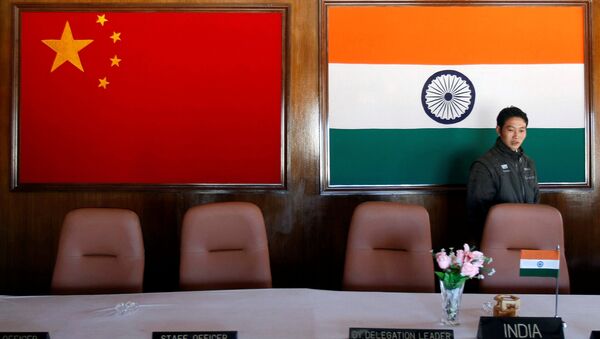India is considering measures to prevent China from using its trade partners in Southeast Asia as proxy re-export bases for pushing Chinese goods into India.
India has plans to rework its free trade agreements (FTAs) with South Asian nations to ensure that Chinese products do not make their way into India via countries like Malaysia, Thailand, Singapore and Vietnam with which India has FTA, according to Indian Commerce Ministry sources.
Use of proxy nations to route products to India has been a practice China has been deploying, according to a report compiled by the Indian parliamentary standing committee on commerce in 2018.
The report came down heavily on the Chinese practice of “re-routing” its products through countries with which India has a Free Trade Agreement (FTA).
“The underdeveloped members of Association of South East Asian Nations (ASEAN) have served as hubs for Chinese exporters to circumvent anti-dumping and countervailing duties,” said the report of the committee tabled in the Indian parliament in July 2018.
This is precisely the reason why India is planning to rework its FTA with the South Asian free trade blocs, the ministry’s sources have indicated.
But is this akin to stoking a trade war or just part of India’s effort to protect its trade in view of the malpractices used by China to gain access to the Indian market?
They say that if FTA conditions like country of origin or value addition are not being adhered to then India can take measures or rework the deals. Also, if India feels that its national security is being compromised in any way, then it is free to take countermeasures.
Rahul K. Mishra, professor of strategy and international management at the IILM Institute for Higher Education, told Sputnik, “There is something like country of origin clause in a trade deal under which there has to be a value addition of at least 40 percent needs to be done to access the zero percent tariff to trade. For example, if Thailand has signed a FTA with India, and if Thai companies do not comply with the value addition clause and just re-export whatever they have imported from China, it is a violation of the FTA agreement.
“So, India can always insist on two things. One, enforcement of country of origin clause and value addition for the industrial goods should be done in the country that has signed FTA. Apart from that, to protect a particular industry and jobs also, India can have in place clauses restricting entry of particular industry,” Mishra added.
He said that when it comes to multilateral agreements, that come under World Trade Organization (WTO) rules, India can restrict a particular product or a country on grounds of national security.
India has got multilateral trade agreements with a number of South Asian Trade blocs, which may also be reworked owing to the growing concerns on the trade deficit front, which the Narendra Modi government is taking very seriously.
The widespread feeling in the Indian government is that the country has not benefitted from these agreements, according to Commerce Ministry sources.
From $23 billion in 2010, Indian exports to ASEAN increased to $36 billion in 2018, registering an annual growth of 5 percent annually. In the same period, however, India’s imports from ASEAN witnessed a 8 percent annual growth from $30 billion to $57 billion.
India has got a wide trade deficit with China too, which it is trying to address by reducing the non-essential category imports.
Bilateral trade between India and China amounted to about $87 billion in 2018-19, according to the Indian Ministry of Trade and Commerce. However, it is lopsided in favour of China, with India’s trade deficit running over $50 billion between 2016 and 2019.
In the wake of ongoing standoff at the Line of Actual Control (LAC) with China in Ladakh, India has clamped a slew of trade restrictions on its northern neighbor.
India recently extended an anti-dumping duty on certain varieties of steel until this December and imposed higher duties on bamboo imports.
Restrictions have also been put on imports of power tillers, while customs duty has been increased on 89 items to curb imports such as footwear, toys, and furniture, among other goods.






